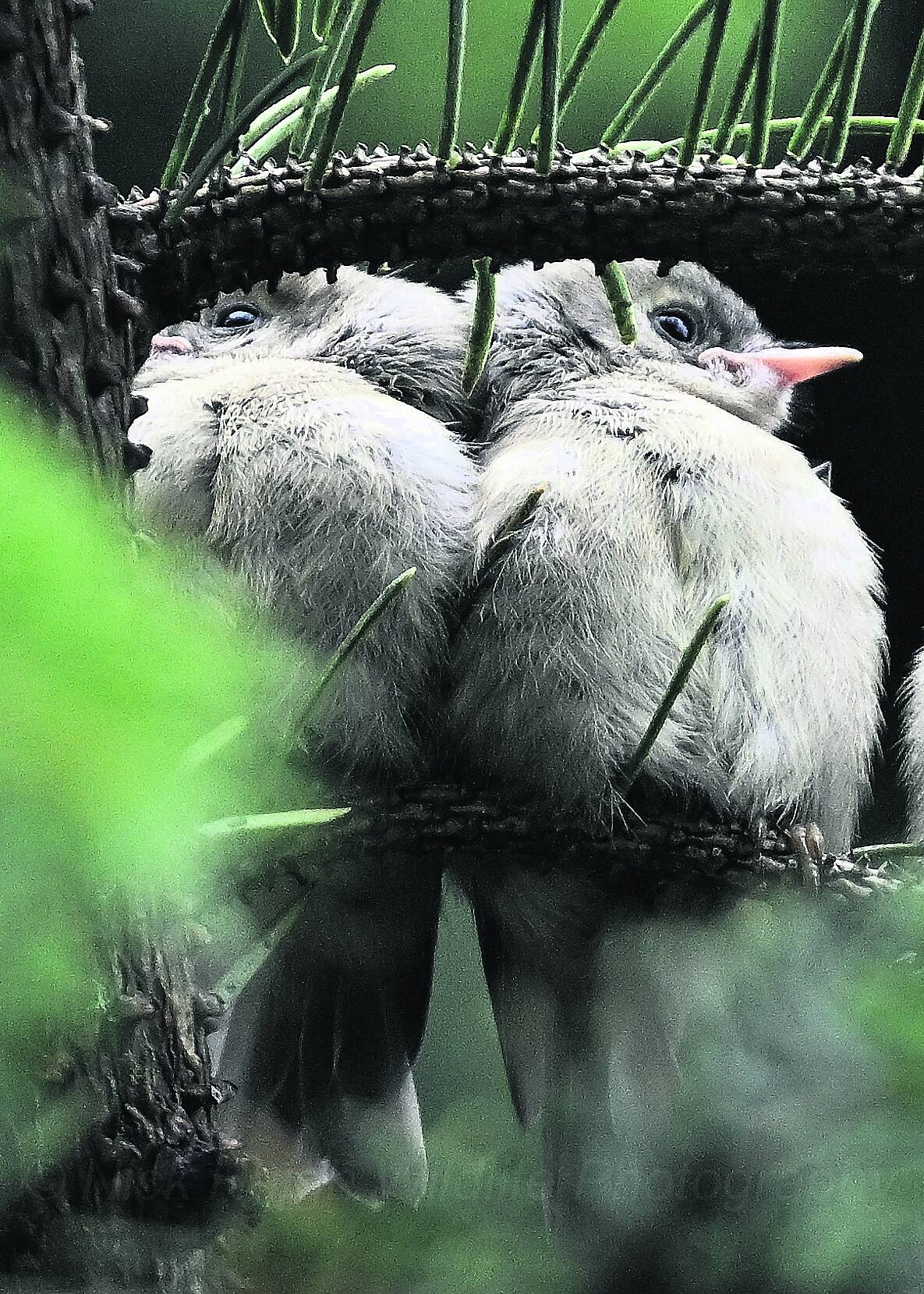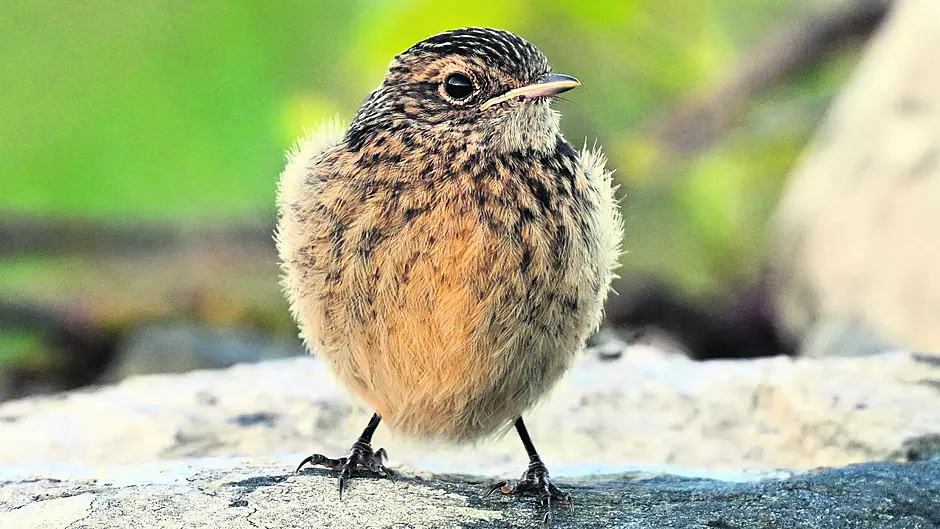
Along the Ilen River in Drimoleague last week, my family watched in awe as two grey wagtails tirelessly fed their chicks.
The nest was cleverly tucked between the bricks in a bridge, completely hidden at first glance.
Yet every few minutes, a parent returned, prompting the featherless chicks to stretch their necks through a gap in the wall, beaks wide open in anticipation.
Grey wagtails are slender birds with striking yellow underbellies, long tails, and graceful, bobbing movements. Always a delight to watch, they flitted back and forth along the river with beaks full of insects for their hungry young.
Back in Skibbereen, our focus shifted to chicks that had just left the nest. A local pair of swans glided proudly along the Ilen with their fluffy cygnets in tow, a heart-warming sight as the river winds through town.
Working hard
At this time of year, birds are busy raising their young. After hatching, baby birds, called nestlings, stay in the nest, completely dependent on their parents.
Different species fledge at different rates.
Some, like the wren, leave the nest 12 to 15 days after hatching, while blue tits take about 21 days. Larger birds such as birds of prey often remain as nestlings for seven to eight weeks. Others, like swans and many waterbirds, produce precocial young that are born ready to leave the nest, usually within 48 hours.
Nestlings of many garden birds must increase their body weight tenfold before fledging, which means constant feeding by the parents. Blue tits, for example, time hatching to match peak caterpillar availability. With such a narrow window, they have only one brood per year. Just as well, because each chick may eat up to 100 caterpillars a day. To keep up, the parents might need to find 1,000 caterpillars daily.
Even after fledging, young birds often depend on their parents for another two to four weeks as they learn to forage and fend for themselves.
Going again
The first brood of blackbirds in our garden has already fledged. It was a joy to watch both males and females feeding their young on our lawn. Many are surprised to learn that fledglings often leave the nest before they can fly. This is true of both blackbirds and robins, two of our most familiar garden birds. In the meantime, the young rely on their parents for food and protection while staying hidden in vegetation.
We took great pleasure in watching the blackbird family at work, but their young were not given long to develop independence. Blackbirds raise multiple broods through spring and summer, building a new nest for each clutch. This means the parents must quickly shift their focus from one brood to the next.
Robins follow a similar pattern, often raising a second or even third brood in a single season. Newly fledged robins are soon encouraged to become independent so their parents can begin again.
Dangerous times
Although baby birds often evoke warm and fuzzy feelings, there is also a darker side to this stage of life. Many will not survive to adulthood. Inexperienced fliers are especially vulnerable to predators such as sparrowhawks, which depend on fledglings to feed their own chicks.
Others fall victim to vehicles, particularly when they freeze or dart unexpectedly from roadside hedges. It causes me great distress when they appear suddenly along country roads, and I do my best to avoid them.
We saw this high mortality rate first-hand with the swan family on the Ilen. Early sightings and photos showed five cygnets, but within days the number had dropped to three. Only around half of all cygnets are expected to survive their first year, with most losses in the first two weeks. Predators including crows, herons, magpies, foxes and mink account for many of these deaths. Even large fish such as pike and perch have been known to take young cygnets in the water.
 Gold crest fledglings waiting patiently for their parents to return with food (Photo: Nick Haigh)
Gold crest fledglings waiting patiently for their parents to return with food (Photo: Nick Haigh)
Smart strategies
Some birds have developed clever ways to protect their vulnerable young. Juvenile birds often look quite different from their parents, deliberately so. This helps protect them from aggression by territorial adults. For example, adult robins can be very aggressive if they think a rival has entered their territory. Fledglings, lacking the red breast, aren’t seen as a threat. In many species, fledgling plumage also provides camouflage. Young blackbirds, for instance, are speckled brown, helping them blend into the ground and undergrowth.
Shelduck often use a kind of crèche system. Shortly after hatching, ducklings are led from the nest, which is often in an abandoned rabbit burrow, to communal feeding and nursery areas, supervised by one or more adults. These shared groups usually include around 20 ducklings, though numbers as high as 200 have been recorded. The strategy relies on safety in numbers.
Finding fledglings
With so much nesting and fledging at this time of year, it’s not unusual to find baby birds on the ground. It’s easy to worry, but in most cases, no human help is needed. People often mistake fledglings for abandoned chicks, but the parents are usually nearby and still feeding them. If the bird has feathers and is moving about, the best thing is to leave it alone and watch from a distance.
If the bird has no feathers, it’s probably a nestling and unlikely to survive outside the nest. The best approach is to gently return it to the nest if possible, or place it in a makeshift one nearby using a small container with soft material.
It’s a myth that parent birds reject chicks touched by humans. If returned safely, the parents should resume care within an hour, so keep watch quietly from a distance. If the bird is clearly injured, contact a wildlife rescue or a vet for advice.
At this time of year, it is a privilege to witness the nesting and fledging of the birds we share our gardens and countryside with.








